Full steam ahead for carbon dioxide monitoring mission
Monday, 23 May 2022 15:00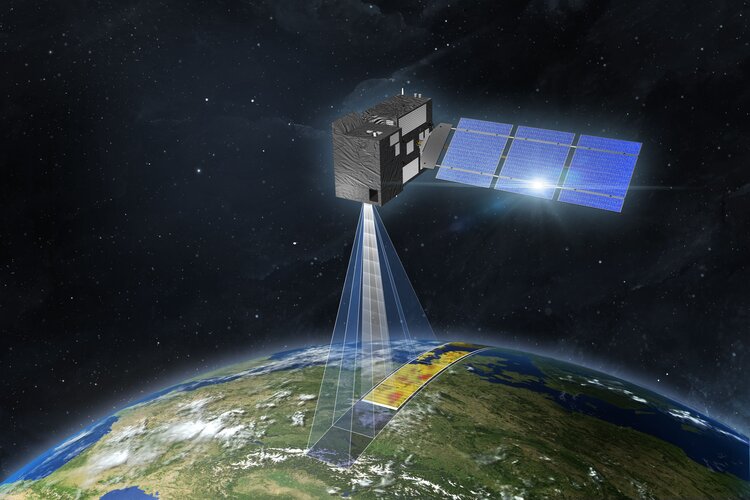
The Copernicus Anthropogenic Carbon Dioxide Monitoring mission has taken another step forward as ESA authorises the mission’s prime contractor, OHB, to continue the development of the first satellite that will take it to being launch-ready and, in parallel, start production on the mission’s second satellite. Celebrated at ESA’s Living Planet Symposium in Bonn, this contract rider follows an initial contract that was signed in 2020.
Did NASA find a mysterious doorway on Mars? No, but that's no reason to stop looking
Monday, 23 May 2022 13:09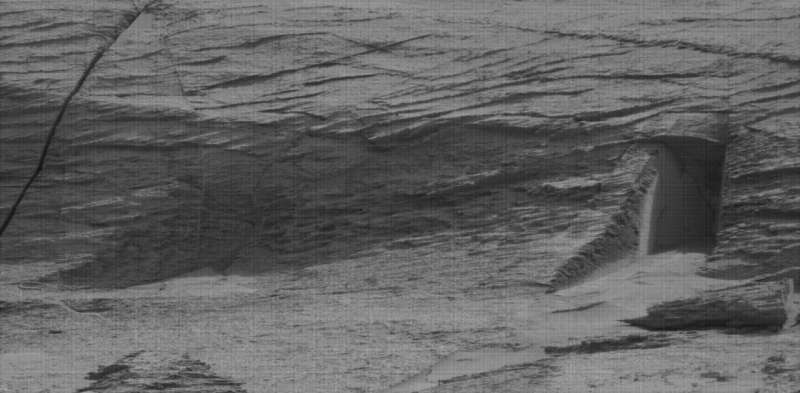
For the past 10 years, NASA's Curiosity rover has been trundling around the surface of Mars, taking photos in its quest to understand the history and geology of the red planet and perhaps even find signs of life.
Last week it took a photo which appeared to show a doorway carved into the rock. It's the sort of thing that on Earth might indicate an underground bunker, such as an air-raid shelter.
Seeing is not always believing
At first sight, the picture is totally convincing. At second sight, maybe not. The passage seems to go in only a short way before the steeply descending roof meets the floor.
And then those killjoys at NASA tell us its only about 45 cm high. Still, who said Martians had to be the same height as us? But thengeologists point out several straight-line fractures can be seen in this site, and the "doorway" is where they happen to intersect.
Such a pity. It would have been so exciting if it had been a real doorway.
Op-ed | Protecting Space Assets Above to Assert Geopolitical Dominance Below
Monday, 23 May 2022 12:53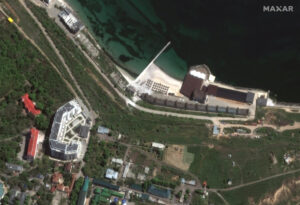
The conflict in Ukraine has shown us that we must now protect and make both our government and commercial space assets more resilient.
The post Op-ed | Protecting Space Assets Above to Assert Geopolitical Dominance Below appeared first on SpaceNews.
Swarm unveils magnetic waves deep down
Monday, 23 May 2022 12:00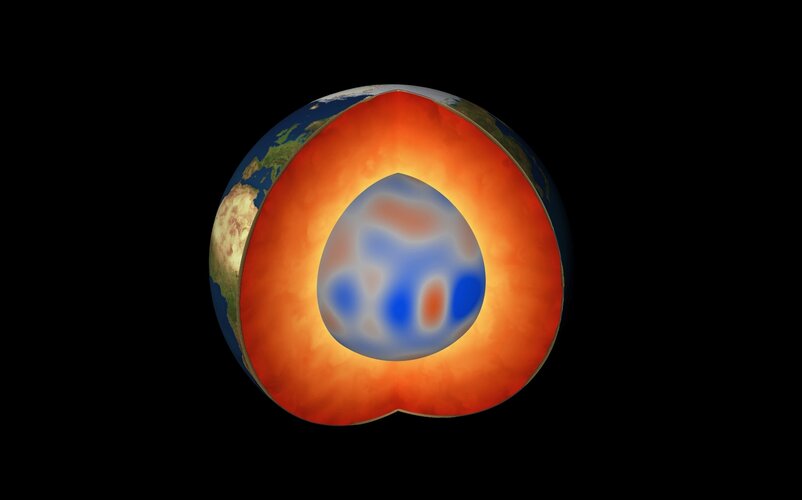
While volcanic eruptions and earthquakes serve as immediate reminders that Earth’s insides are anything but tranquil, there are also other, more elusive, dynamic processes happening deep down below our feet. Using information from ESA’s Swarm satellite mission, scientists have discovered a completely new type of magnetic wave that sweeps across the outermost part of Earth’s outer core every seven years. This fascinating finding, presented today at ESA’s Living Planet Symposium, opens a new window into a world we can never see.
Industry pushes for NASA reauthorization
Monday, 23 May 2022 10:09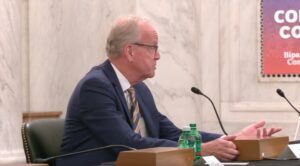
As House and Senate conferees begin work to reconcile competitiveness bills, industry groups are pushing Congress to either include a NASA authorization bill in that legislation or pass a standalone bill.
The post Industry pushes for NASA reauthorization appeared first on SpaceNews.
Living Planet Symposium kicks off
Monday, 23 May 2022 10:00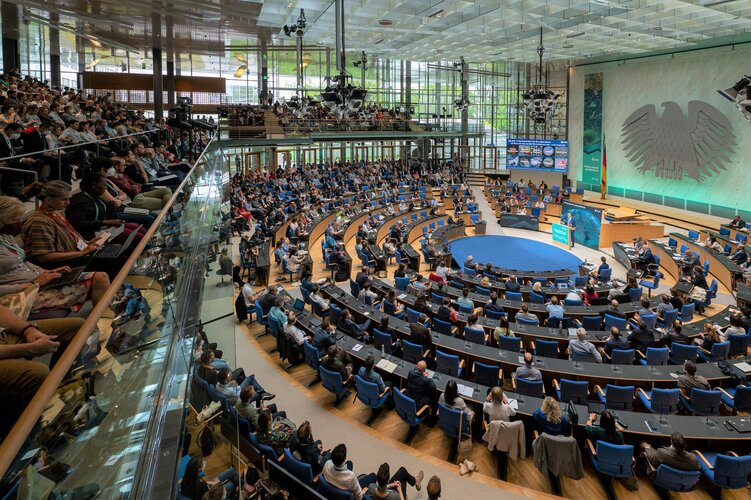
ESA’s Living Planet Symposium has opened with a flourish with over 4000 participants including scientists, academics, space industry representatives, institutional stakeholders, data users, students and citizens gathered to discuss the latest findings on our changing planet, as well as advances in satellite technologies, new opportunities in the commercial world, and ESA’s plans for the future.
Fly me to the Moon: US, Japan aim for lunar landing
Monday, 23 May 2022 09:13 Japan and the United States said Monday they want to put the first Japanese astronaut on the Moon as the allies deepen cooperation on space projects.
No non-American has ever touched down on the lunar surface, and Japan has previously said it hopes to achieve a Moon landing by the end of this decade.
President Joe Biden, after his first face-to-face meeting with Japan's Prime Minister Fu
Japan and the United States said Monday they want to put the first Japanese astronaut on the Moon as the allies deepen cooperation on space projects.
No non-American has ever touched down on the lunar surface, and Japan has previously said it hopes to achieve a Moon landing by the end of this decade.
President Joe Biden, after his first face-to-face meeting with Japan's Prime Minister Fu Charting a safe course through a highly uncertain environment
Monday, 23 May 2022 09:13 An autonomous spacecraft exploring the far-flung regions of the universe descends through the atmosphere of a remote exoplanet. The vehicle, and the researchers who programmed it, don't know much about this environment.
With so much uncertainty, how can the spacecraft plot a trajectory that will keep it from being squashed by some randomly moving obstacle or blown off course by sudden, gal
An autonomous spacecraft exploring the far-flung regions of the universe descends through the atmosphere of a remote exoplanet. The vehicle, and the researchers who programmed it, don't know much about this environment.
With so much uncertainty, how can the spacecraft plot a trajectory that will keep it from being squashed by some randomly moving obstacle or blown off course by sudden, gal Kongsberg Defence and Aerospace orders three surveillance satellites from NanoAvionics
Monday, 23 May 2022 09:13 Norway's Kongsberg Defence and Aerospace (Kongsberg) has placed an order for three microsatellites with Lithuanian mission integrator NanoAvionics for a space-based maritime surveillance mission covering the North Sea area. All three satellites will be based on NanoAvionics's largest satellite bus so far, the MP42 microsatellite bus.
The surveillance payload will consist of instrumentation
Norway's Kongsberg Defence and Aerospace (Kongsberg) has placed an order for three microsatellites with Lithuanian mission integrator NanoAvionics for a space-based maritime surveillance mission covering the North Sea area. All three satellites will be based on NanoAvionics's largest satellite bus so far, the MP42 microsatellite bus.
The surveillance payload will consist of instrumentation NASA's ECOSTRESS detects 'heat islands' in extreme Indian heat wave
Monday, 23 May 2022 09:13 A relentless heat wave has blanketed India and Pakistan since mid-March, causing dozens of deaths, fires, increased air pollution, and reduced crop yields. Weather forecasts show no prospect of relief any time soon. NASA's Ecosystem Spaceborne Thermal Radiometer Experiment on Space Station instrument (ECOSTRESS) has been measuring these temperatures from space, at the highest spatial resolution
A relentless heat wave has blanketed India and Pakistan since mid-March, causing dozens of deaths, fires, increased air pollution, and reduced crop yields. Weather forecasts show no prospect of relief any time soon. NASA's Ecosystem Spaceborne Thermal Radiometer Experiment on Space Station instrument (ECOSTRESS) has been measuring these temperatures from space, at the highest spatial resolution Self-cleaning spacecraft surfaces to combat microbes
Monday, 23 May 2022 06:09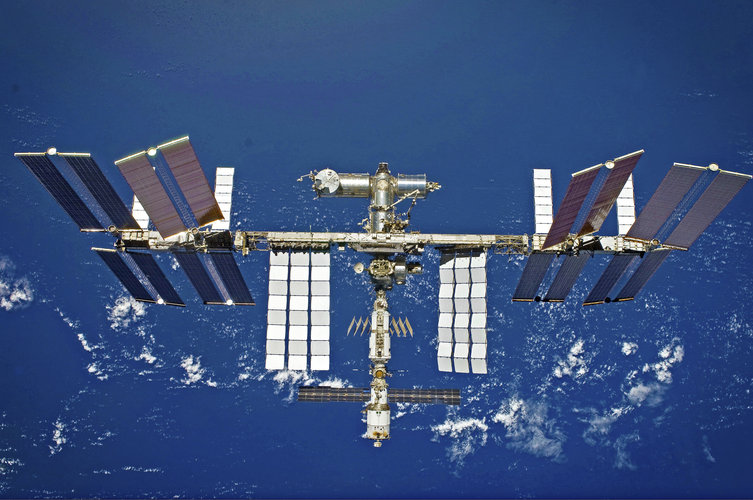
Astronauts live and work in orbit along with teaming populations of microorganisms, which could present a serious threat to health – and even the structural integrity of spacecraft. To help combat such invisible stowaways, an ESA-led project is developing microbe-killing coatings suitable for use within spacecraft cabins.
Live now: Living Planet Symposium
Monday, 23 May 2022 05:20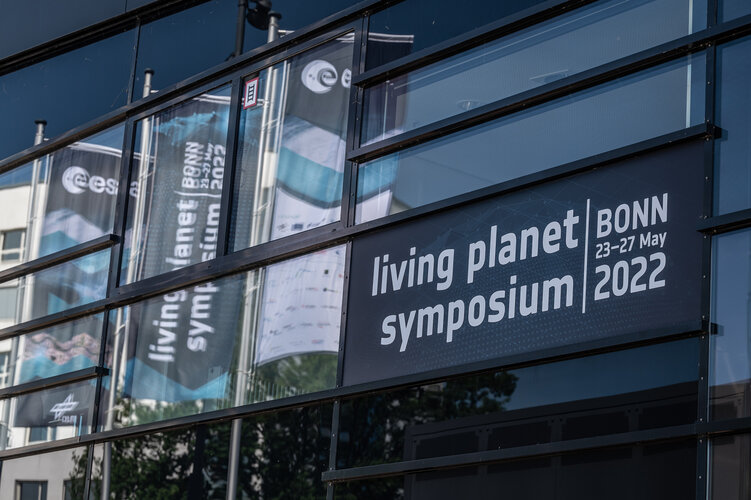
Live now: Living Planet Symposium
Watch the Opening Session live from Bonn
Military looking for new ways to acquire and use commercial satellite data
Monday, 23 May 2022 04:01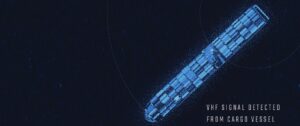
Space Systems Command is trying to figure out how to exploit traditional and new types of commercial space data
The post Military looking for new ways to acquire and use commercial satellite data appeared first on SpaceNews.
Starliner launches to remain on Atlas 5
Sunday, 22 May 2022 22:21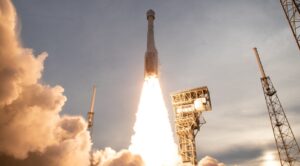
WASHINGTON — Boeing and United Launch Alliance say they remain committed to launching future CST-100 Starliner commercial crew missions on Atlas 5 rockets even after that vehicle is effectively retired for other missions.
Artemis I Moon Rocket to Return to Launch Pad 39B in Early June
Sunday, 22 May 2022 10:02 The Space Launch System (SLS) rocket and Orion spacecraft are slated to return to launch pad 39B at NASA's Kennedy Space Center in Florida in early June for the next wet dress rehearsal attempt.
Engineers successfully completed work on a number of items observed during the previous wet dress rehearsal test. This includes addressing the liquid hydrogen system leak at the tail service mast u
The Space Launch System (SLS) rocket and Orion spacecraft are slated to return to launch pad 39B at NASA's Kennedy Space Center in Florida in early June for the next wet dress rehearsal attempt.
Engineers successfully completed work on a number of items observed during the previous wet dress rehearsal test. This includes addressing the liquid hydrogen system leak at the tail service mast u 